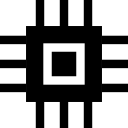Computer organization: Difference between revisions
Mr. MacKenty (talk | contribs) |
|||
| Line 8: | Line 8: | ||
* [[Functions of the arithmetic logic unit (ALU)]] | * [[Functions of the arithmetic logic unit (ALU)]] | ||
* [[Control unit (CU)]] | * [[Control unit (CU)]] | ||
* [[Registers within the CPU]] | * [[Registers within the CPU]] | ||
* [[Primary memory]] | * [[Primary memory]] | ||
* [[Cache memory]] | * [[Cache memory]] | ||
Revision as of 18:59, 9 October 2022

Computer Organization[1]
A computer is an electronic device for storing and processing data, typically in binary form, according to instructions given to it in a variable program.[2]
Computer architecture[edit]
- Architecture of the central processing unit (CPU)
- Functions of the arithmetic logic unit (ALU)
- Control unit (CU)
- Registers within the CPU
- Primary memory
- Cache memory
- The machine instruction cycle
Secondary memory[edit]
Operating systems and application systems[edit]
Binary Representation[edit]
Simple logic gates[edit]
Standards[edit]
- Outline the architecture of the central processing unit (CPU) and the functions of the arithmetic logic unit (ALU) and the control unit (CU) and the registers within the CPU.
- Describe primary memory.
- Explain the use of cache memory.
- Explain the machine instruction cycle.
- Identify the need for persistent storage.
- Describe the main functions of an operating system.
- Outline the use of a range of application software.
- Identify common features of applications.
- Define the terms: bit, byte, binary, denary/decimal, hexadecimal.
- Outline the way in which data is represented in the computer.
- Define the Boolean operators: AND, OR, NOT, NAND, NOR and XOR.
- Construct truth tables using the above operators.
- Construct a logic diagram using AND, OR, NOT, NAND, NOR and XOR gates.